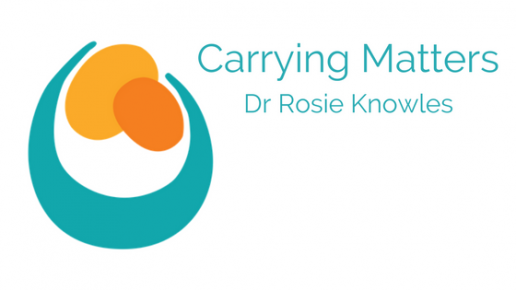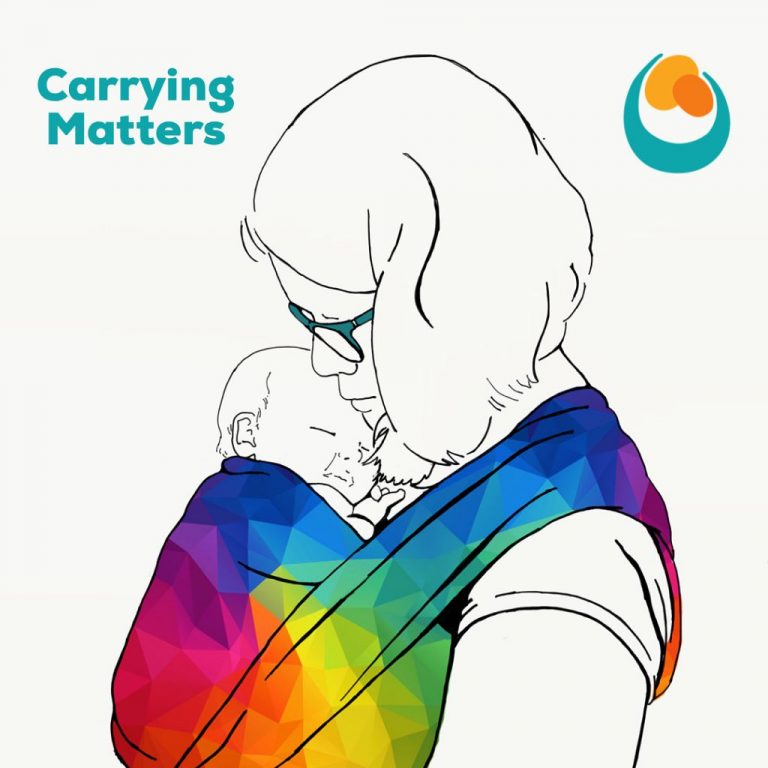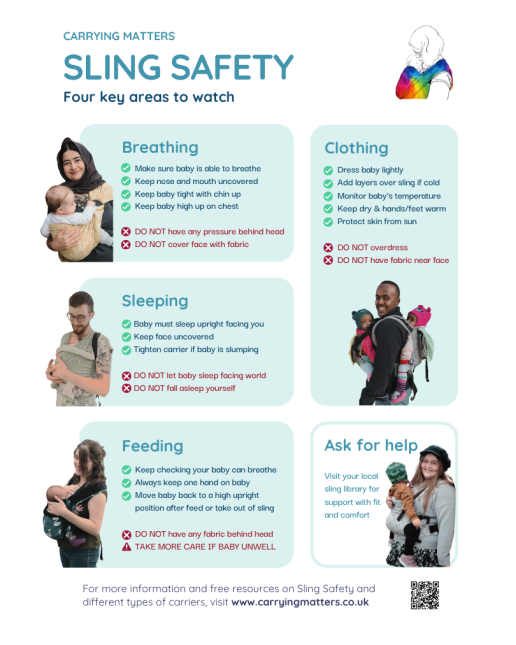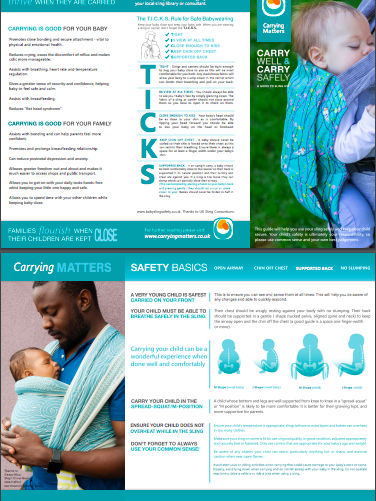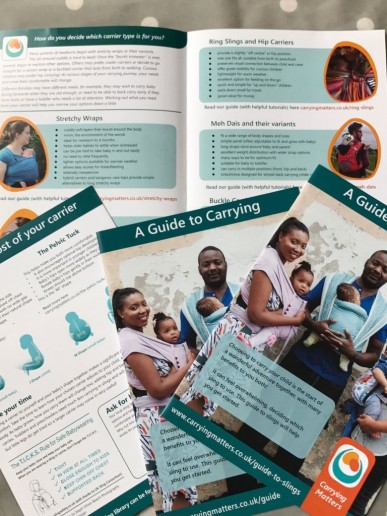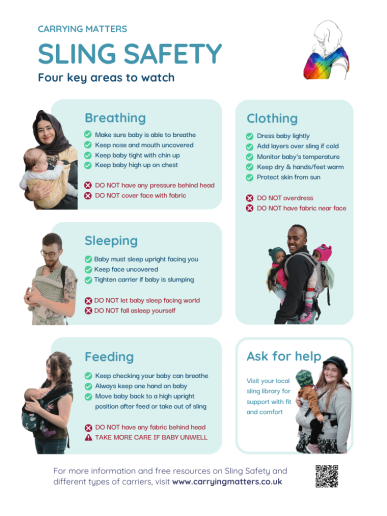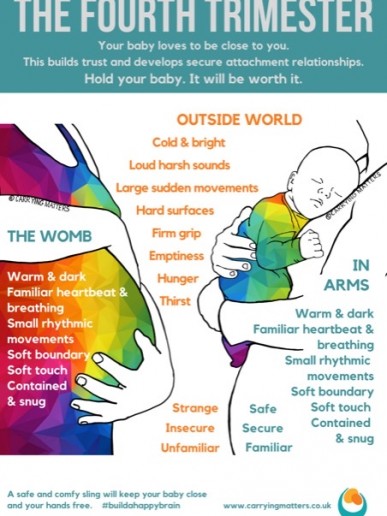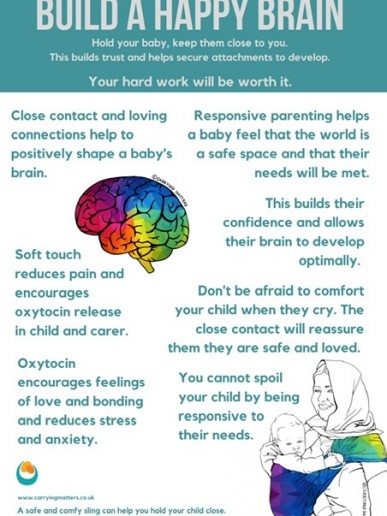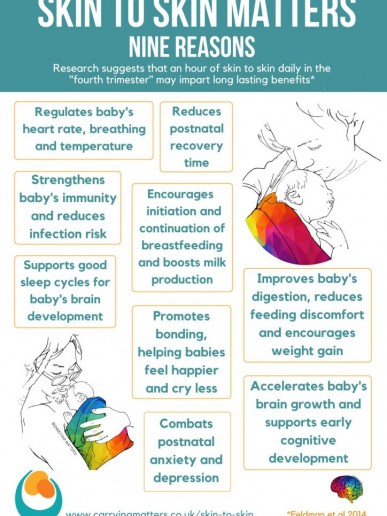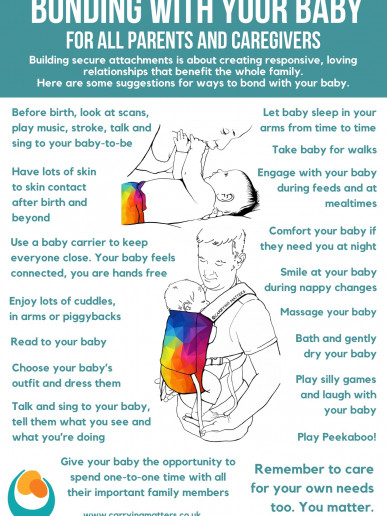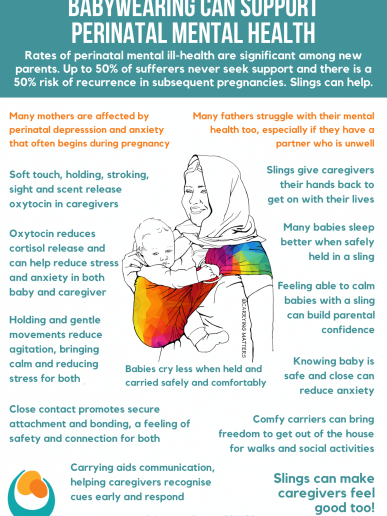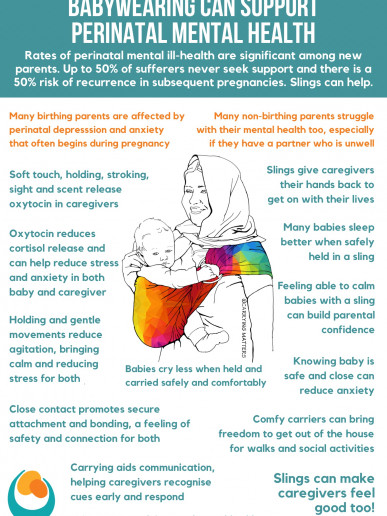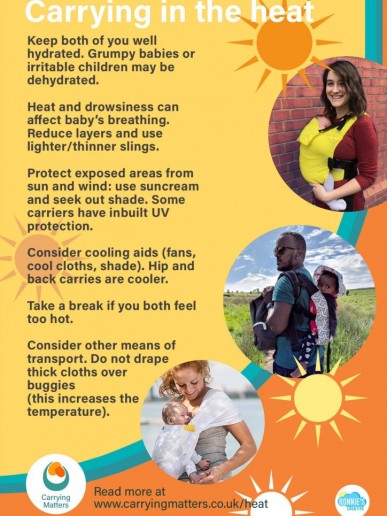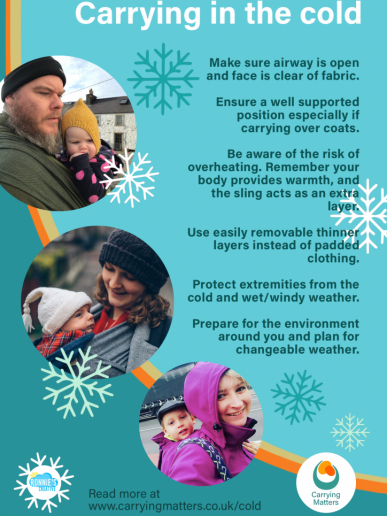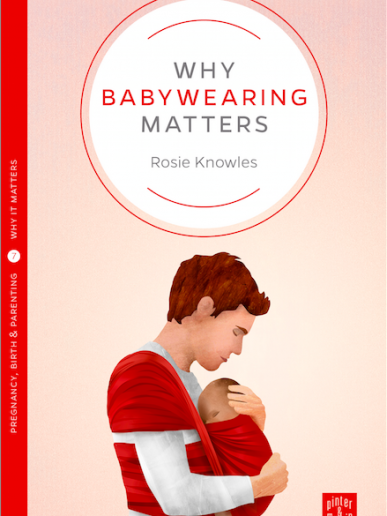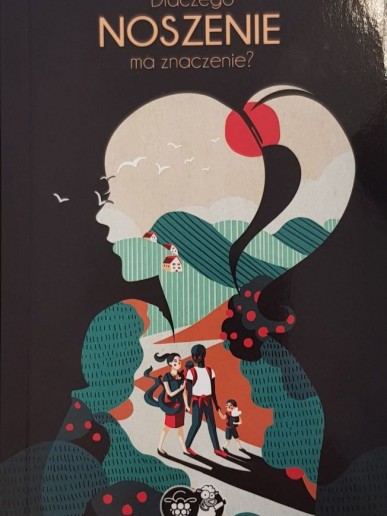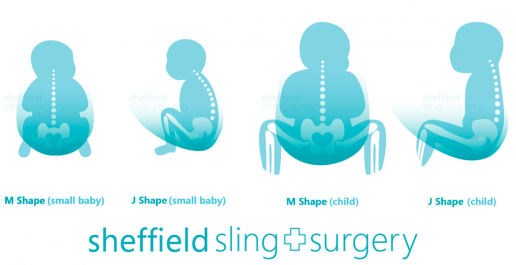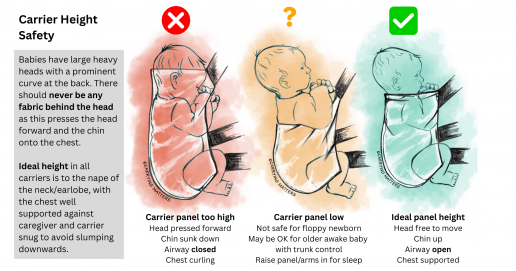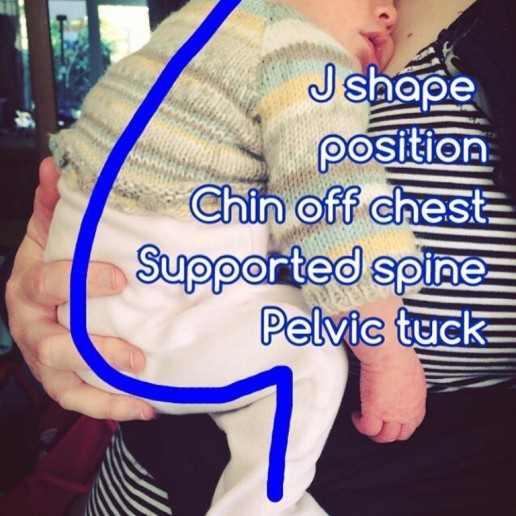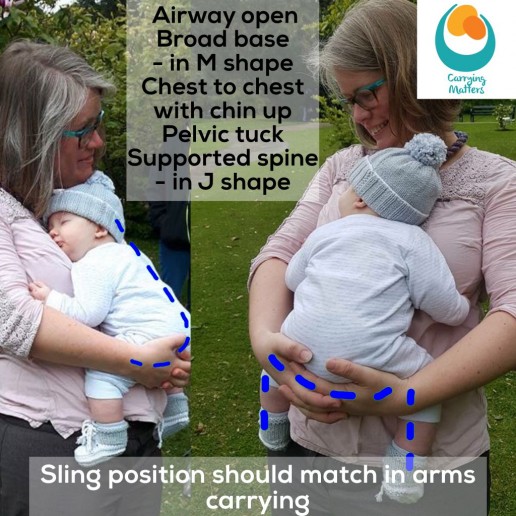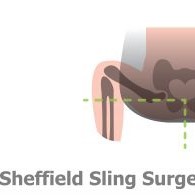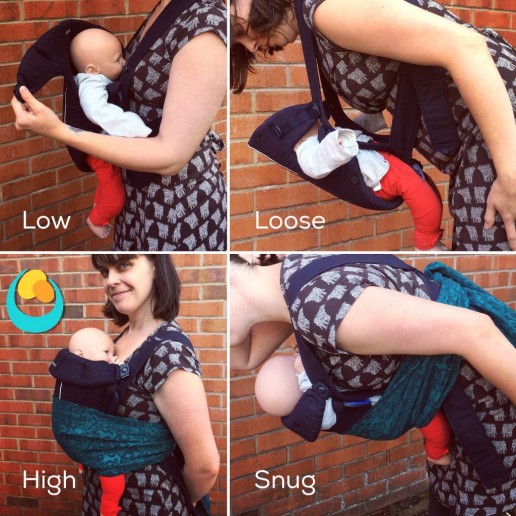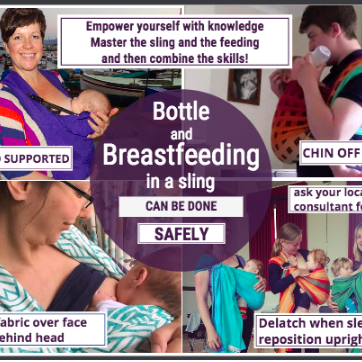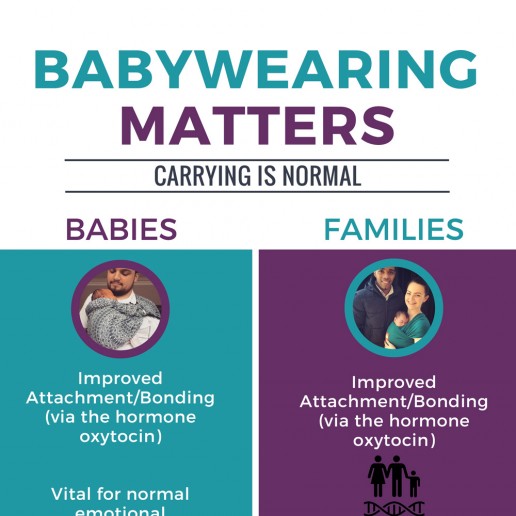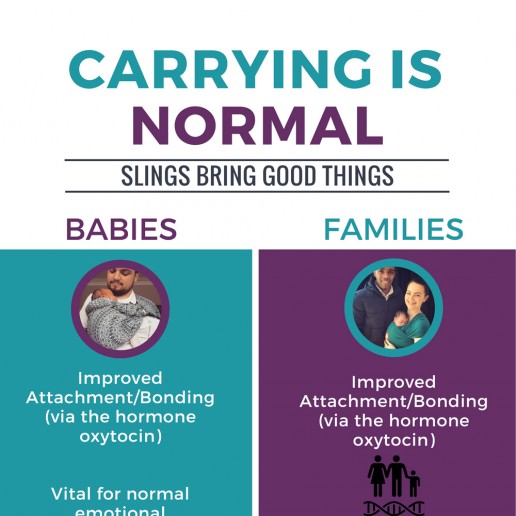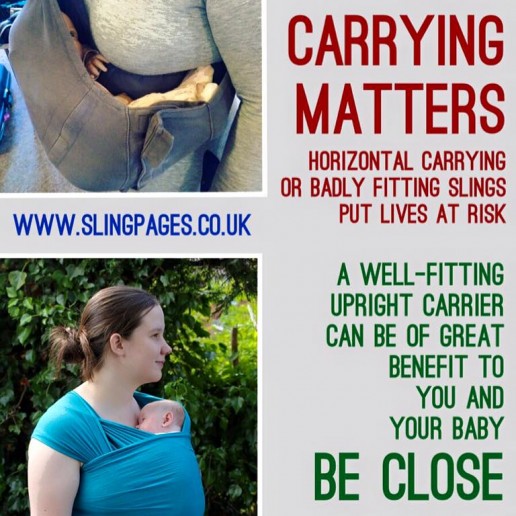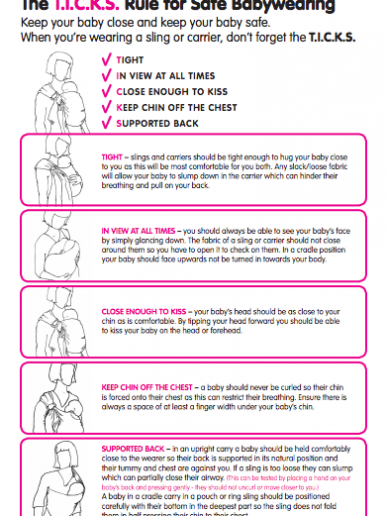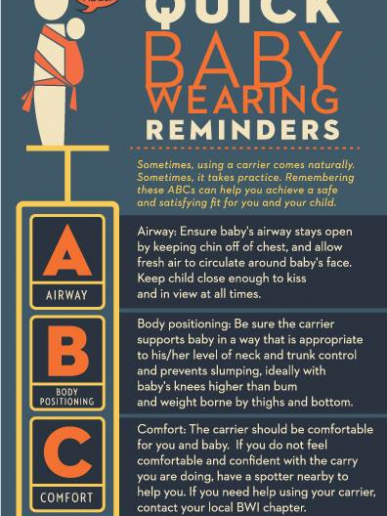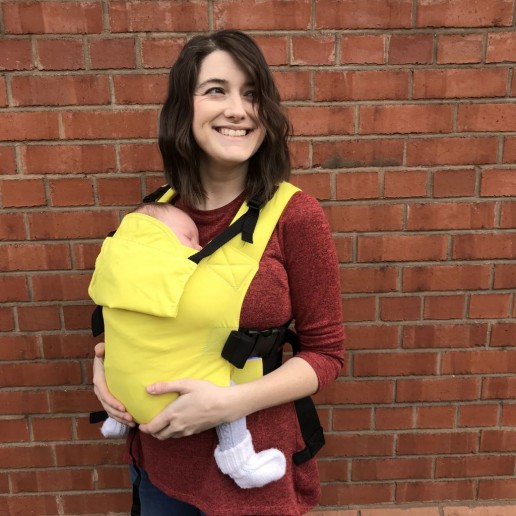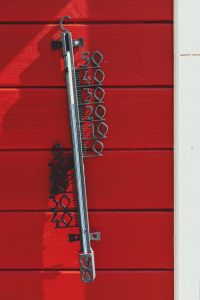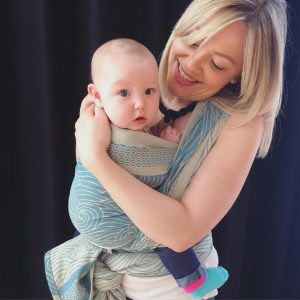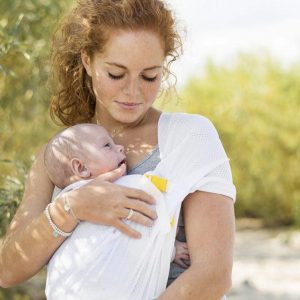Carrying in the heat; summer babywearing
Summer slings and keeping safe while carrying in the heat is a hot topic among regular sling users. Carrying in warm weather can be hot and bothersome!
Read our guide to safe summer babywearing in the heat.
Educational Resources
This page contains various resources that may be useful for education and supporting others. Leaflets, posters and postcard packs can be purchased. Images and PDFs can be downloaded free of charge by clicking on the photos. Please ensure you credit me (Dr Rosie Knowles) if you use them.
Safety Resources
- The 4 Key areas webpage can be found here – this has links to translations into other languages.
- The Carrier Height webpage is here – the image can be found lower down on the page.
Click on the image to download a PDF, or order a pack of high quality printed leaflets using the button below.
Click on the image to download a PDF, or order a pack of high quality printed leaflets using the button below.
Click on the image to download a PDF, or order a pack of glossy postcards or posters using the button below.
Click on the image to download a PDF, or order a pack of glossy postcards or posters using the button below.
Click on the image to download a PDF, or order a pack of glossy postcards or posters using the button below.
Click on the image to download a PDF, or order a pack of glossy postcards or posters using the button below.
Click on the image below to download a PDF, or order A3 posters using the button below.
Click on the image to download a PDF, or order A3 posters using the button below.
Click on the image to download a PDF, or order A3 posters using the button below.
Click on the image to download a PDF, or order A3 posters using the button below.
Click on the image to download a PDF, or order a pack of posters using the button below.
Click on the image to download a PDF, or order a pack of posters using the button below.
Read Rosie’s well loved Why Babywearing Matters book here, published by Pinter and Martin.
Read Rosie’s well loved Why Babywearing Matters book here, translated into Polish by Lenny Lamb.
Snowsuits, Scarves, Slings and Safety - Carrying in the Cold
Autumn and winter can be a wonderful time of year, with frosty mornings and chilly walks, the first snowfall, and a little child nestled cosily up to you. Fresh air is good for the soul, and exercise and changes of scenery can make a big difference to family life. You don't need to be afraid of wintry weather, in fact, a baby carrier can help you go places!
It is important to consider safety in all things, and dressing warmly for winter while using a sling/carrier is no exception. Snowsuits may be cute and warm but they need to be used carefully.
When the weather turns chilly, or even icy, every caring parent’s mind turns to how to keep their baby warm in the cold air. Out come the snuggly snowsuits and the hooded jackets, out come the warm cosy scarves and thick cardigans, all aimed to keep you and baby toasty warm. At sling library sessions I can often be found encouraging parents to undress their babies, and often themselves! But why? Surely warmth is important?
Indeed it is, and it is good to be aware of your child’s needs. But there is often still a question about the best way to keep warm when you are using a sling… are the snuggly snowsuits really the best option? Are they safe to use, especially with the current advice about avoiding thick coats in car seats? (see the link at the bottom).
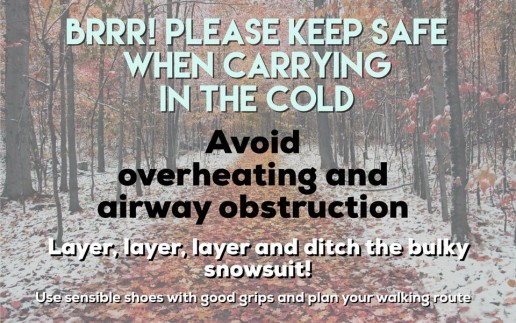
I see a lot of parents with small babies (under four months) in snowsuits or thick jackets who are then settled into a carrier, be it a stretchy or woven wrap or a meh dai or a buckle carrier. Problems can arise at this point; baby is often too warm, and may be rather sleepy as a result, or irritable, and the parent may be finding the carrier uncomfortable. Babies under 4 months are at greatest risk of difficulties due to their relative smallness weakness; they do not have strong and sustained head, back and torso control, so are more likely to run into problems. Older babies and toddlers are very different!
Let’s look at some of the major factors to consider when using a carrier in the cold.
1) Be aware of OVERHEATING
Too many thick snuggly layers can be a risk of overheating. Babies are by nature warm little creatures (carrying them can feel like having a delightful wriggly hot water bottle on your front) and it is their extremities and their heads that need protecting much more than their middles. They are not yet able to regulate their own temperatures in the way that adults can (which is why skin to skin contact from an adult for a feverish or cold child can be so very useful) so being close to your body will rapidly warm a child up anyway. As you walk you will warm up, and your extra heat will warm up the child on your front even more.
Being too hot is not good for babies; it makes them sleepy and overbundling a sleeping baby is a risk for SIDS (sudden infant death syndrome). It makes sense to avoid this overheating in slings just as much when baby is sleeping in a bed or a car seat. Furthermore, being too bundled up reduces their ability to sweat (the drops of sweat need to be able to evaporate to carry heat away) which means even older children who can regulate their temperature better will also struggle with being too hot. Hot babies are at significant risk; it is relatively easy to add extra layers for warmth if you misjudge slightly and to remove them when you come in out of the cold.
.
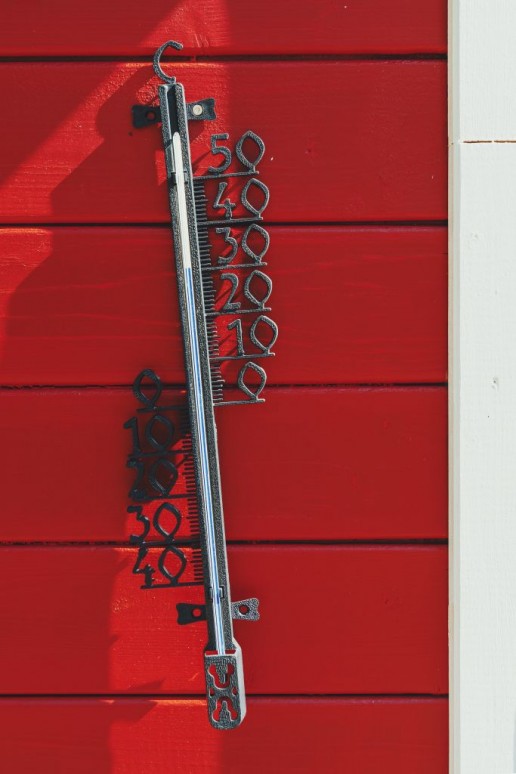
2) Be aware of AIRWAY
Sometimes the weight of baby inside the snowsuit can mean they sink down inside it, due to gravity, and end up with their faces buried inside the body of the snowsuit. This may pose a risk to airway and breathing; the same goes for hooded jackets or thick cardigans that can “ride up” the back of the carrier.
Too much fabric around the chest and upper body will also make it hard to achieve a fully supported back and a tight carry. This may increase the risk of too much space between baby’s head and your chest, allowing his chest to curl and compress and his heavy head to slump forwards, potentially compressing his airway, or burying his face into fluffy fabric, reducing airflow. Thick snowsuits really can be a significant risk.
Always ensure good airflow. Be aware of your own clothing too; a cowl or a scarf may prove problematic if your baby snuggles his face into the fabric, reducing free airflow. This is more of a risk with smaller babies than in those who have head control and are able to move themselves independently.
Make sure your baby’s face is not obscured by scarves or fabric that could be problematic if they fall asleep.
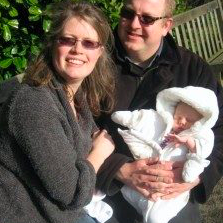
This little boy is too small for his snowsuit; if he was placed inside a sling his face would disappear into the fluffiness.
3) Be aware of POSITION
Increased bulk can affect positioning considerably. It is hard for joints to bend easily in thick, stiff trousers or multiple layers of clothing, so the M shape with bent knees higher than bottom that encourages healthy hips and protects the natural curve of the spine into a J shape can be hard to achieve. Baby may end up being “starfished” into a carrier with a hyperextended posture, rather than being comfortably seated.

Baby will feel heavier as he is not resting against the parent/carer’s body in the same way, and the weight distribution will change.
Too much bulk around the top may also affect the support to baby’s upper body, meaning that baby’s weight is pulling back away from your shoulders, rather than resting on your chest, and may be more uncomfortable.
Too much padding around the nappy region (especially in those babies wearing cloth nappies) could cause a reduction of blood flow to the lower limbs.
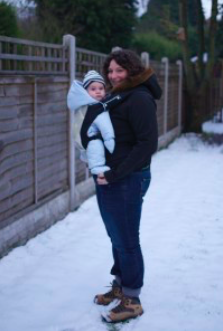
Baby above, has been straightened into a starfishing shape as the snowsuit is preventing his hips and knees from bending. however baby below is in the M shape.
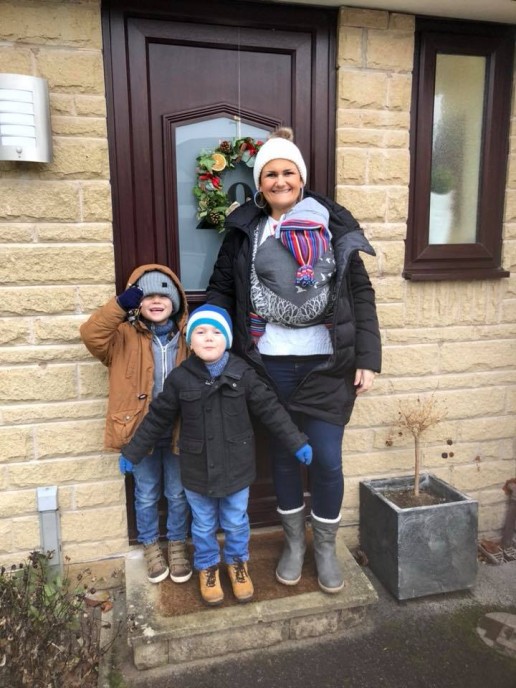
OK, so this is good to know. But it’s cold out there! My baby needs to be warm, what can I do?!
Here are some suggestions how to ensure your chilly weather carrying is safe and still snuggly warm.
If you need to go out in windy and cold conditions, or snow storms, your small baby will be warmest and best protected close to you on your front, here you can shield them from the wind and horizontal snow flurries easily.
Back carries for older children may be easier for you to see your feet as you go but be alert to their experience and ensure they are well protected. Carriers that keep children close to your body will be warmer and less likely to make you feel off balance as you walk, compared to framed backpack carriers worn high on the back; these will also be very cold for children as they are held away from body heat and more exposed to wind chill.
1) LAYER LAYER LAYER – carrying under coats
This is key to virtually all carrying, as the sling is in itself a layer of clothing, and sometimes more than one, depending on its type. A stretchy wrap is three layers, and some are thicker than others. Some buckle carriers are double layer panels, some are three. Every parent/child combination have their own micro-climate too, so what feels right for one family may be different for another.
In hot weather, you need as few as you can manage safely, whereas in cold weather you need more layers. Layers trap air in between them, so can often be more effective at providing warmth than one or two thick items of clothing, while still allowing flexibility.
Thin light all-in-one fleece suits are warm, while still being breathable and allowing good joint movement for positioning. It may be worth considering a size up to protect little toes with the riding up you get with a sling, however, too large a fleece could mean too much fabric around the face and neck. Layer up with vests and onesies and cardigans and leggings and so on, rather than using a very padded or furry inflexible snowsuit, you will be surprised how warm babies can get!
It is best, if possible, to keep baby as close to you as you can, and add layers on over the top. These layers can be undone/removed easily if baby is getting too hot (flushed, very warm chest skin, sweating, unexpectedly sleeping, for example), or if you go inside into a warm shop from a cold outside.
Wearing a large (maternity or oversized) coat which you can then wrap around your baby on the front will add warmth, as will a mac in rainy weather.
If you are creative, you could knit yourself a panel insert which would button onto your favourite button coat, making it wider to fit your baby and the sling inside. You can do the same with a zip insert (check before you buy that the zip insert fits onto your own zip). If you are innovative, you can use a large oversize hoodie or cardigan with a very big neck or a zip that can be undone to go over both of you, or wear an oversized coat backwards if you can get someone else to do up the zip. Others may use a large shawl to wrap around themselves, or a home-made fleece poncho.
There are many babywearing coats or ponchos or vests and other items of clothing on the market which have been specifically designed for this, such as the Mamalila, Lenny Lamb, Zoli, Wombat, Momawo, Liliputi coat ranges (among many others), Boba/Lenny Lamb/Angelwings hoodies/fleece vests, to name just a few, and many are suitable for back carrying.
Some can be expensive; for many they are invaluable especially if they are used frequently for back carrying (many maternity coats or extender panels do not allow back carrying) and some are stylish enough to be worn as normal coats to make them worth the outlay. Some will have hoods for both parent and baby, some won’t – it is worth doing your homework and trying a few before you splash out.
There are also some babywearing covers, similar to pushchair covers, that can just go over baby and sling but not parent, which may be useful if the parent prefers less warmth (such as Bundle Bean or Isara).
In rainy weather, some will use large anoraks over both baby and parent. There are several waterproof ponchos or covers on the market which can go over the sling on the top and umbrellas are very useful. Some creative folks have even threaded the arms of cross strap buckle carriers through a child’s waterproof anorak to cover over the panel!
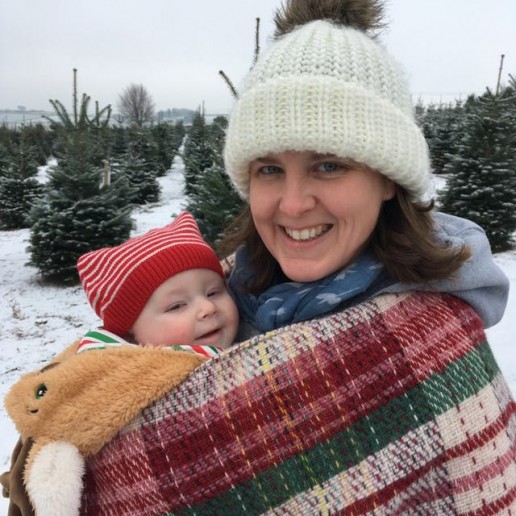
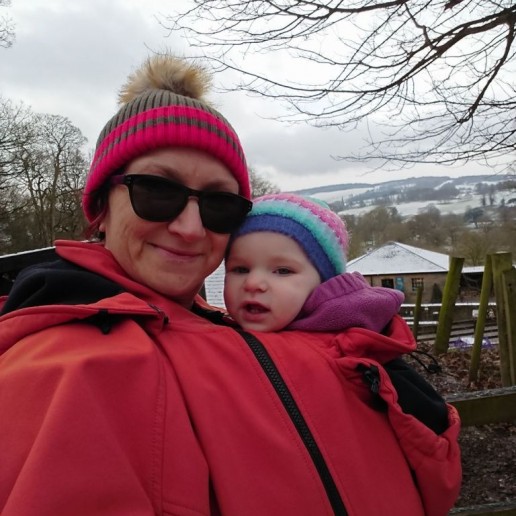
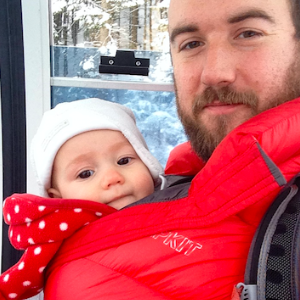
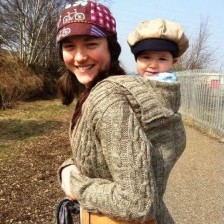
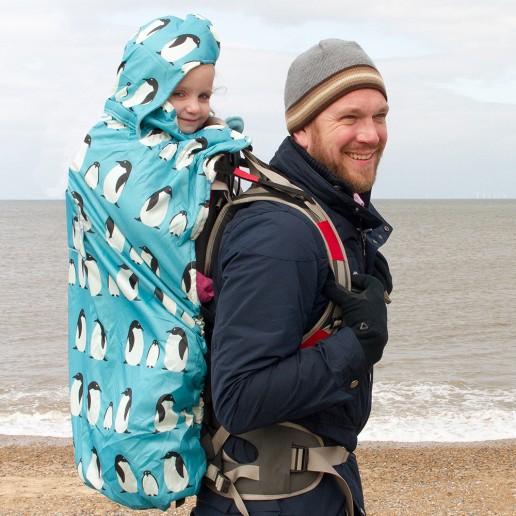
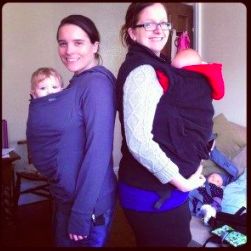
2) PROTECT EXTREMITIES
So if your baby’s body is nice and warm, heads and limbs need to be kept warm too.
This is where things like baby leggings, tights and socks can be very useful indeed, layering up over the feet. Some people find boots helpful as well, such as Stonz or Thinsulate boots (varying price ranges) or wooly booties that can be tied gently on to avoid falling off. Some fleece onesies have feet that can be folded over to make a closed foot. Feet can get much colder than hands as they are harder to tuck in near the warm central core.
Heads can be kept warm with hats…(of which there are many gorgeous options). Some opt for balaclavas with neck covers and various hoods to keep necks warm and prevent removal!
Hands can be kept warm with gloves with ribbons sewn in to stop them from falling off, or socks worn on the hands. Many fleece onesies have sleeves that can be folded over hands.
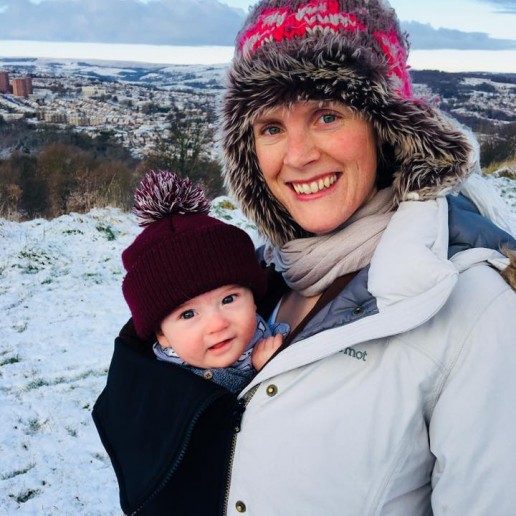
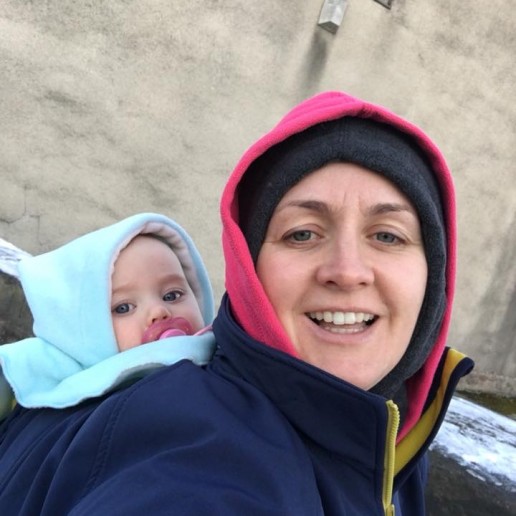
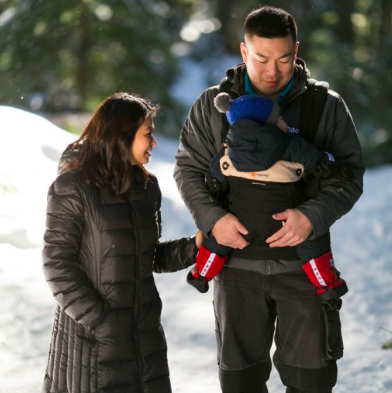
3) MANAGING CARRYING OVER COATS
This tends to work better for older babies or toddlers who want to be up and down all the time, and can work well in some circumstances, depending on the coat, the carrier and if you have anyone to help you. It can be hard to get a sling snug over the top of a bulky or slippery coat, and hard to get a snug fit on the back without help, but for many this works well.
Taking some care when planning the coat you use will make a big difference, (one that is thin and grippy, for example may be easier to work with, and hoods may get in the way of unobstructed breathing). Selecting the sling you use matters too; what you choose for normal use for maximum comfort may prove too complex over a coat. Pick one that is easily adjustable, and easy to get on and off.
This style of carrying over coats on the back may be much more convenient for toddlers who prefer to be able to get up and down again in quick succession. They are more likely to get cold on your back as they cannot snuggle into your body heat in the same way, so will need to be much more warmly dressed than a smaller baby on the front. This is especially true for framed carriers that hold children high up and separate. These children are not at the same risk of slumping over inside over-large suits and ending up with an obstructed airway, and as they are outside your coat, they will get cold. Snowsuits (that fit and are still flexible) can be an excellent solution here, as can waterproofs over coats and snuggly trousers.
Hands and feet will get a lot colder with this type of carrying, so make sure you are prepared.
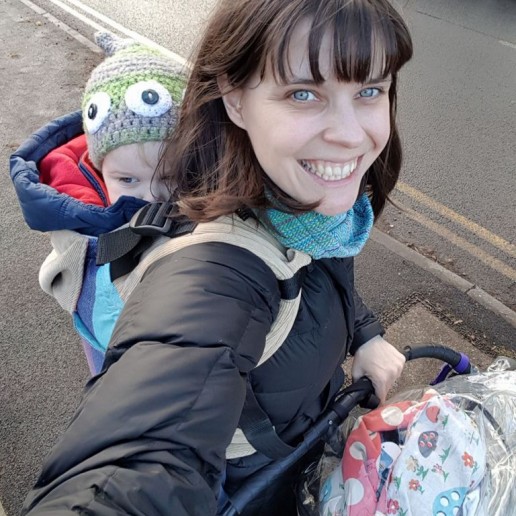
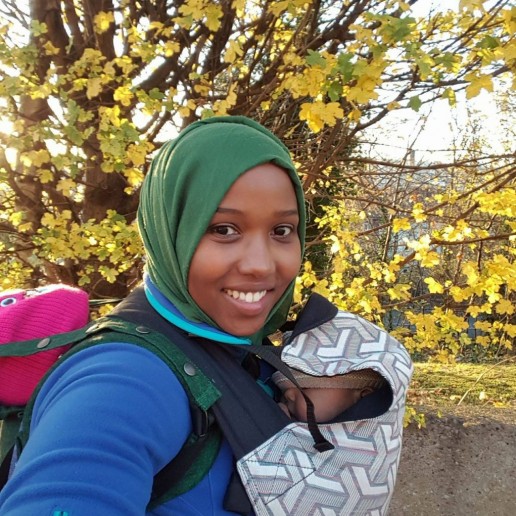
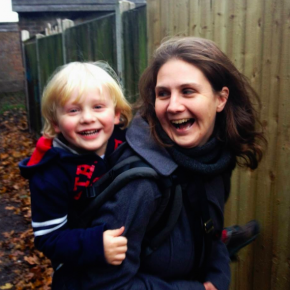
CARRYING IN SLIPPERY WEATHER
It is fantastic to be able to explore in freedom with your child in all weathers. But what about, even if you have the choice of sling and clothing right, the ground is icy and slippery?
CHOOSE SENSIBLE FOOTWEAR!
If carrying in the snow and ice, slip-on ice gripping covers (eg Yaktrax or other brands) that can go over shoes and boots can be enormously useful to prevent slipping… and if you do slip, your baby will be much safer in the sling than she would be loose in arms. Some metal grippers may not work well on mixed ground, as they may slide on smooth surfaces and can be hard to remove quickly, so have a good look at a few types and where you will need to use them before you pick one. It can be hard to remove them with a baby on your front, so plan ahead!
Good boots with grippy soles designed for all terrains may be worth investing in. Some families have used very large knitted socks over their shoes for grippiness over snow and ice when they know there are also stone stairs etc on the school run and they don’t want to go flying.
Some people recommend front carrying more in slippery weather, as if you do fall, you can use your hands to break your fall and protect your child more easily than if you fall backwards. Some people prefer not to carry at all and to use a buggy! Use whatever tool works best for your circumstances.
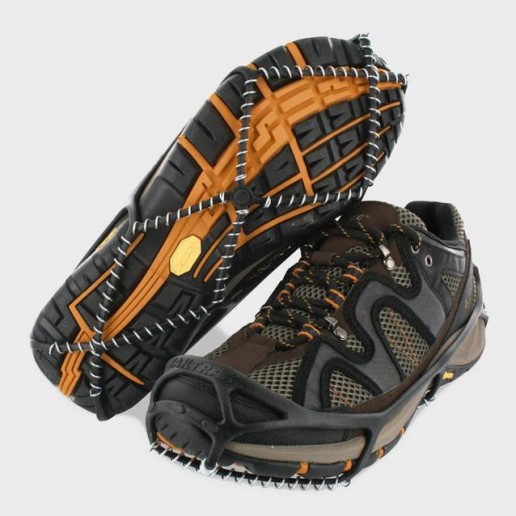
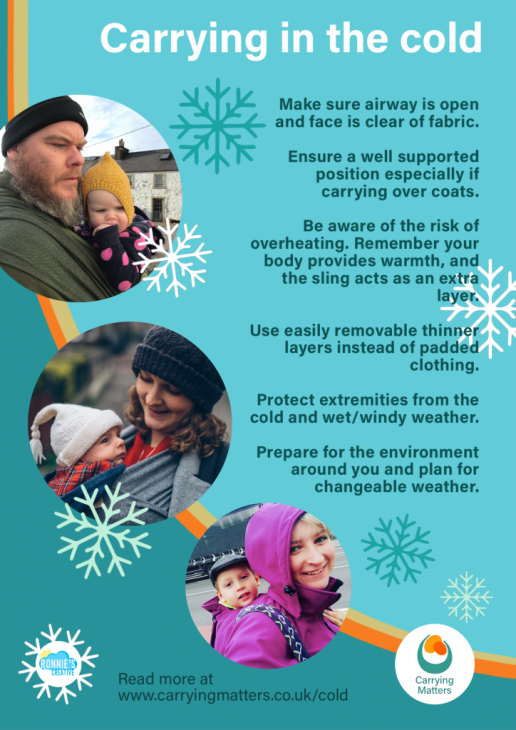
Here is some more information about cold weather carrying from other sources
http://southlondonslings.co.uk/2013/11/12/carrying-in-the-cold/ and
http://stroudslingmeet.wordpress.com/2014/09/20/slinging-in-the-rain-and-cold-and-wind-and-snow/
Here is the link discussing winter coats and car seats..
Blog post originally written 2014, updated Dec 2017
Summer Slings and Keeping Safe in The Sun - Carrying in the Heat
Summer slings and keeping safe while carrying in the heat is a hot topic among regular sling users. Carrying in warm weather can be hot and bothersome!
“Can I carry my baby in this heat? We are getting way too hot with our sling!” is a question I am asked many times in the few warmer months we get in the UK. Babies are warm little creatures, and in the summer humidity, they can feel like hot-water bottles on your chest. Many parents worry and stop using their slings in the summer as they don’t enjoy the sweatiness and stickiness that can come with hot-weather babywearing, and then miss the closeness. Sometimes children insist on being carried, so you get hot anyway, or pushchairs aren’t an option.. so what is a parent to do?
First of all, don’t worry. You won’t overheat your baby by carrying him. Women have been carrying in the heat for generations, in far hotter climes than the UK, they carry their children daily and come to no harm. The body is able to thermoregulate appropriately. However, there are a few things you can do to make the experience more pleasant for you both.
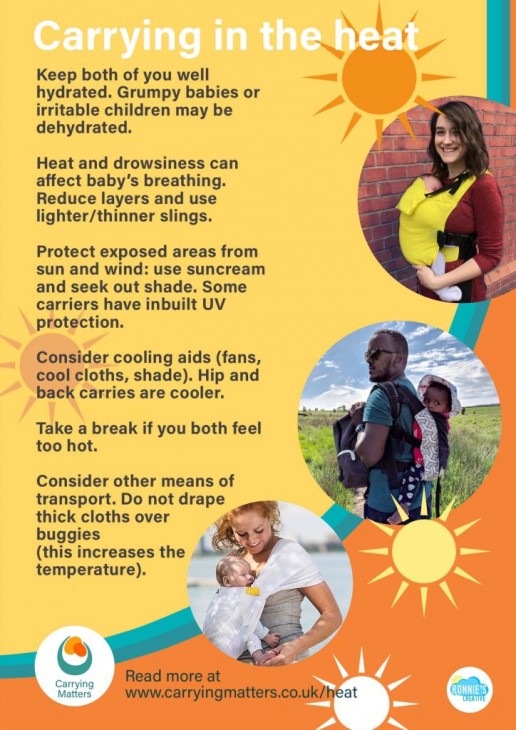
1) You and your baby need to be safe in the increased temperatures.
- Keep well hydrated. Baby needs to replace all the fluid she is sweating out – don’t underestimate her need to drink or breastfeed in warm weather. Take frequent breaks from your summer activity to check on your child and allow this re-hydration. Breastfeeding mums will need to increase their own fluid intake to compensate for the higher milk demand (breast milk becomes more watery and thirst-quenching in hot weather, amazing!) and everyone will need to drink more. Exclusively breastfed babies can get all their fluid requirements by frequent feeding and are unlikely to need any other fluids if they are feeding well. Bottle fed babies may well need some cool boiled water in addition to their formula. Sweating actually helps to cool the body down, by using the heat beneath the skin to evaporate the moisture. The better hydrated you are, the easier it will be to provide sweat. Adults are better able to thermoregulate than small children, so you can actually help to cool your hot child down by skin to skin.
- Think about the clothing you’re both wearing. Layers of clothes trap air, and therefore can keep heat in in cold weather.. so in hot weather, wear less layers on yourself, and reduce your child’s clothing too. Natural fabrics tend to be cooler – pure cotton, linen, bamboo allow breathability more than man-made fabrics and tend to cause less stickiness. The sling counts as layers of clothing, so take that into account.
- Protect your child from sunburn and windburn. Muslins can be draped over exposed legs or heads – but they are very thin and babies may still burn through them if not careful. UV protection covers from Snooze Shade can help for buggies. Hoods can be a mixed blessing in hot weather, as they can trap warm air when closed, thus increasing the temperature inside the carrier and reducing the flow of air around. A light, tie-on broad brimmed hat with neck coverage is often a better option. Clothing can help – lightweight long sleeves can add protection. Some slings provide mechanical protection from the sun, and some have UV protection features as well. Suncreams are an important part of caring for your child’s health (especially if they fall asleep and you are distracted.) Please check your sun cream is appropriate for your baby’s age and skin. Parasols can provide some shade.
- Cooling aids can be helpful. Some people will place a cool, damp muslin between their bare skin and baby’s, for coolness (others will use dry muslins to wick away sweat). Handheld fans can be very useful to blow cool air around. Sometimes people will use cool-packs to lay against skin every now and again, for brief periods. (I think this is safer than using freezer blocks in carrier pockets next to baby skin. Frozen peas against an ankle begin to hurt after a few moments, and babies may not be able to communicate the source of their discomfort well enough.) Splashing cool water can provide some relief… and regular breaks from the sling in the shade should be part and parcel of ensuring everyone is comfortable.
- Choose the time of day you use your carrier and consider other means of transport. It may be useful to just use your carrier in the cool of the morning or for evening strolls rather than carrying in the heat of the midday sun. Parasols may offer some shade as you walk along. Some parents and children may dislike the sweatiness that comes from close contact in slings and may therefore feel cooler with in arms carrying, or in a pushchair. If you use a buggy do make sure that the seat itself isn’t hot from the sun and that you allow plenty of fresh air inside the chair as temperatures can rise very quickly indeed. The sun cover may indeed keep the sun off but can also trap heat and carbon dioxide due to the reduced air circulation, which can be dangerous for children. The Snooze Shade offers a safe way to protect babies in buggies
Such measures may go a long way to making you and your baby feel a lot happier in the sling that you have.
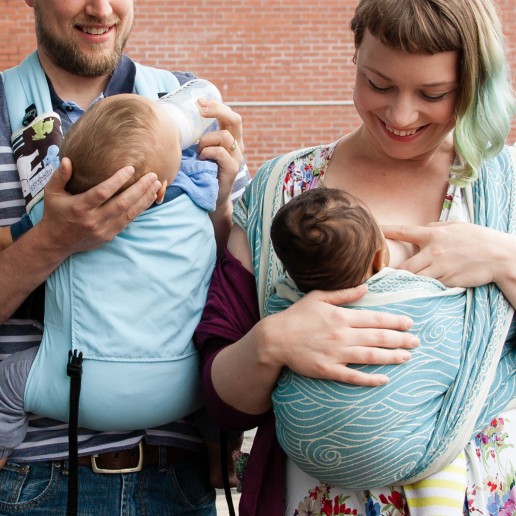
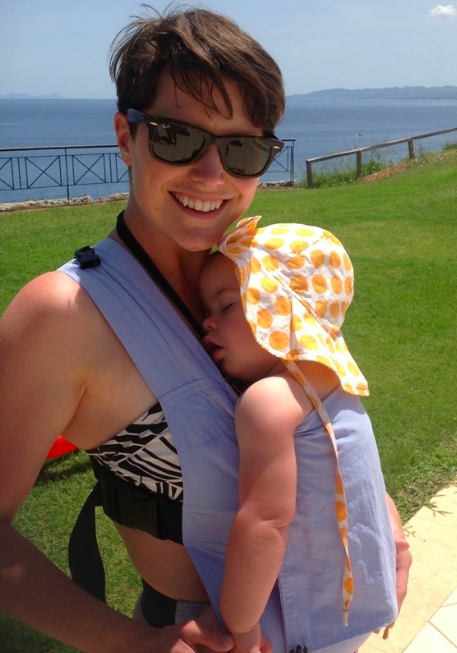
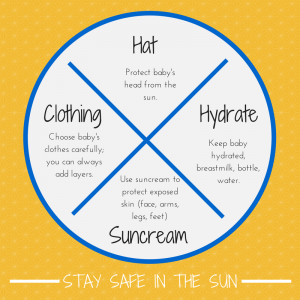
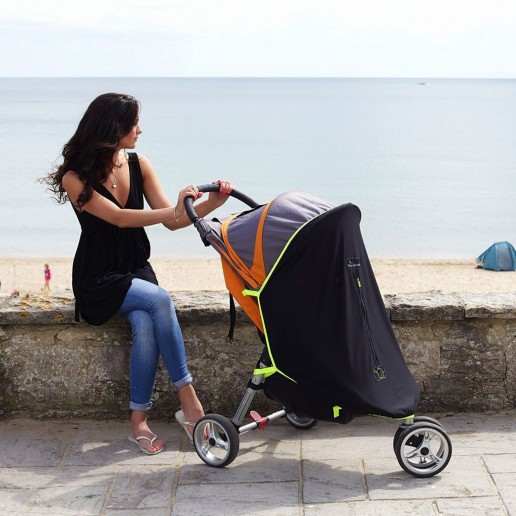
2) Use your current carrier in a way that is more appropriate in hot weather
Please note that each suggestion may not work for every situation. If you are unsure and would appreciate some more help, do get in touch with your local sling consultant/library for some support! The Sling Pages has a comprehensive list of such resources.
Stretchy Wraps
- When stretchy wraps are used with the classic pre-tied Pocket Wrap Cross Carry, it is best to have three layers across baby. This is because the elastic nature of the sling does not provide enough support with only one layer, and two cross layers can be easily divided by a baby pushing away or arching backwards. If you want to use your pre-tied stretchy in the PWCC or a hybrid stretchy carrier with just two layers, ensure the cross passes are well distributed from knee pit to knee pit and up to the neck on both sides, be well aware of the risks and be vigilant of your baby’s movements, especially if you are likely to be distracted.
- You could try using a thin gauze scarf in place of the third layer of hybrid stretchy carriers.
- Front double hammock carries and hip carries (two-layers) are an option. They can be harder to master.
- Seated sideways carries may reduce the body surface contact.
- If you are using an old-style stretchy wrap folded in half (six layers), try using it unfolded (three layers).
Woven Wraps
- Try single layer front carries to reduce the number of layers over baby, such as a kangaroo carry which can have open sides.
- Try hip carries to reduce the amount of fabric around your body.
- Try high back carries (this may reduce surface area contact).
Ring Slings/Mesh slings
- These are often cool anyway. Try a seated sideways position to reduce the amount of surface contact.
- Try a back carry or a torso carry which may feel cooler.
- Fold the shoulder fabric that is cupping your shoulder over itself a little to reduce the coverage across your upper back. Flipped shoulders can also help with this.
Meh Dais/Half Buckles
- Try using your meh dai with the passes unspread across baby’s back (ensure the bunched up passes are not too tight and rubbing into his knee pits) to allow some airflow at the sides.
- Try a hip or back carry.
Buckle Carriers
- Try a hip carry, if your carrier has this functionality.
- Try a back carry if your baby is able to sit unaided (enough upper body strength).
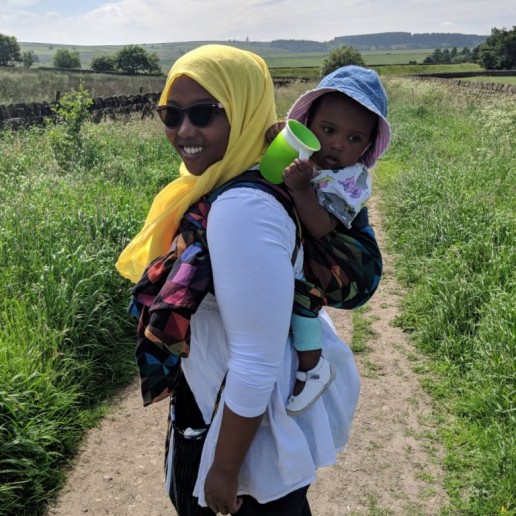
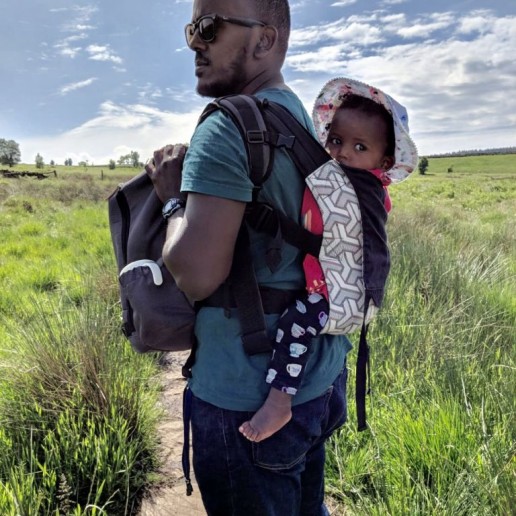
3) Try a carrier that is more suited to the weather
Your local Sling Library may have a few options you can try out for carrying in the heat – it is always worth investigating to see what works for you and your baby comfort-wise. Sometimes hiring for a holiday may be cheaper than buying a new sling!
Stretchy Wraps
There are several lighter weight stretchy wraps available which will feel cooler than the heavier, thicker brands. Bamboo is breathable and cooler, and look at how thick the fabric is before you buy. Stretchies are wonderful for little babies but need a minimum of two, ideally three layers. Some hybrid carriers have mesh panels which can reduce warmth.
Woven Wraps
Lightweight wraps (usually those with a lower density (the g/m2) are cooler and lighter than thicker and heavier ones) can be very useful. Gauze wraps are thin and cool and good with smaller children. Thin cotton wraps are also an option – but may not be as sturdy for bigger children. There are many supportive, lightweight , breathable cotton wraps around and some brands make special lightweight cotton blends with special fibre types for strength (eg “ice cotton”).
There are thick and thin versions of almost every combined blend of woven wrap available, so it is worth doing some research into the thickness and density. Traditionally, linen, hemp and silk are used to add strength and sturdiness to the softness of cotton, and can be lovely lightweight toddlerworthy wraps, but some blends can be thick and warm. 100% linens are often cool and supportive, and loose weaves can be airier than dense ones. Some people find merino blend wraps cool in warm weather, as the breathable wool wicks moisture to the surface to be carried away.
Learning how to use a shorter wrap may be another way of reducing the amount of fabric wrapped around your body.
There are a few mesh wraps around, such as the Fil’Up, which can be very cool to use.
Ring Slings/Mesh Slings
Ring slings or mesh slings like the MiniSling are a great option in warmer weather, as they can be quick to take on and off and only cover half of your body. They are single layer slings, too. Again, like any woven wrap , the fabric involved can make a difference to its warmth. Lightweight muslin ring slings, 100% linens or thin but strong cotton/blends are a good option here. Be cautious about buying thin ring slings from eBay or from non-recognised retailers. There are mesh water ring slings which can be useful in the water, but can also be a little sweaty in dry, hot conditions due to the fabric used. Simple pouches can be a good option as well, if used safely in an upright position, and there are several mesh carrying aids like the Suppori and the Tonga which can help take some of your child’s weight and remain cool. Carrying aids are not hands free, however.
Meh Dais/Half Buckles
Sometimes these can feel warm, if there are multiple layers of fabric in the panel or if the fabric used is thick and dense. Sometimes lighter weight meh dais/half buckles can work well, tied in ways that allow airflow at the sides or with straps not spread across the whole of the parent’s back.
Buckle Carriers
Some buckle carriers are designed for hot weather use, either in the lightness of the fabric they use, the lack of padding, or their design (mesh panels etc). Some people will find rucksack style carriers less warm than cross strap carriers, as there is less padding across the back (when used in front carries). Solarweave fabric is useful and some carriers make a feature of their UV resistant fabric too. Some carriers have lightweight mesh panels or less padded straps, or thin waterproof fabric . Those with thick padded waists may feel just as hot to wear as their standard counterparts.
In summary, yes you can carry your baby in hot weather, there are many things you can do to make it more enjoyable for both of you. Be mindful of your baby’s comfort and be careful of both your needs, and you won’t go far wrong!

